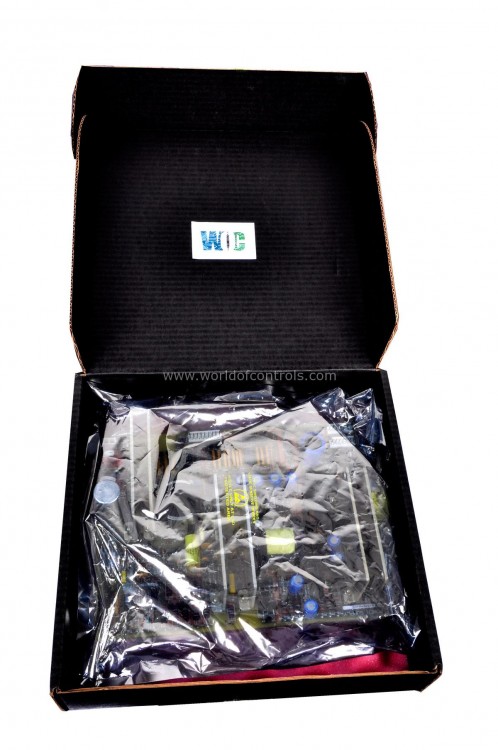SPECIFICATIONS
Part No.: IS200UCVGH1A
Manufacturer: General Electric
Country of Manufacture: United States of America (USA)
Size: 15.9 cm high x 10.2 cm wide
Temperature: -30 to + 65oC
Technology: Surface-mount
Product Type: UCV Controller
Availability: In Stock
Series: Mark VI
Functional Description
IS200UCVGH1A is a UCV Controller developed by GE. It is a part of Mark VI control system. The board is a compact, single-slot board featuring the utilization of an Intel Ultra Low Voltage Celeron processor clocked at 650 MHz, accompanied by a memory configuration consisting of 128 MB of flash memory and 128 MB of SDRAM (Synchronous Dynamic Random Access Memory).
Power Requirements
- +5 V DC: The typical power requirement for +5 V DC is 4 A, with a maximum peak of 5.4 A. This voltage likely powers the primary functions of the UCVGH1 component.
- +12 V DC and -12 V DC: Both the +12 V DC and -12 V DC lines draw less than 1 mA each typically. These voltages might serve specific auxiliary or low-power functions within the UCVGH1 component.
Environmental Operating Conditions
- Operating Temperature: The component's specified operating temperature range spans from 0 to 70 degrees Celsius. Within this range, the UCVGH1 operates optimally under normal conditions.
- Storage Temperature: The storage temperature range extends from -40 to 80 degrees Celsius. This wider temperature span ensures safe storage of the UCVGH1 component even under extreme conditions.
COM Ports
- COM1:
- Function: Reserved primarily for diagnostic purposes.
- Communication Settings: Operates at a baud rate of 9600, with 8 data bits, no parity bit, and 1 stop bit.
- Usage: Intended for diagnostic tasks and monitoring functionalities. Its configuration at 9600 baud rate with standard data bits, parity, and stop bits allows for easy access to diagnostic information and system monitoring, ensuring efficient troubleshooting and maintenance.
- COM2:
- Function: Specifically designated for serial Modbus communication.
- Communication Settings: Supports multiple baud rates, allowing flexible communication speeds.
- Operates at either 9600 or 19200 baud rates.
- Usage: Dedicated for communication purposes utilizing the Modbus protocol. The option to choose between 9600 or 19200 baud rates enhances flexibility in communication speed based on system requirements or compatibility with connected devices using the Modbus protocol.
- COM1 serves diagnostic functions, facilitating system monitoring and troubleshooting at a fixed baud rate of 9600 with specific data, parity, and stop bits configuration.
- COM2 is dedicated to serial Modbus communication, offering flexibility with selectable baud rates of either 9600 or 19200 to suit the communication needs within systems employing the Modbus protocol.
- These COM ports play integral roles in enabling communication and diagnostic functionalities within the UCVGH1 component, offering specific configurations tailored for diagnostic monitoring and Modbus communication, respectively. This setup ensures efficient data exchange, diagnostic capabilities, and seamless integration with systems utilizing serial communication protocols like Modbus.
The WOC team is always available to help you with your Mark VI requirements. For more information, please contact WOC.
Frequently Asked Questions
What is IS200UCVGH1A?
It is a UCV Controller developed by GE under the Mark VI series.
What type of processor does the board utilize?
UCVG board incorporates an Intel Ultra Low Voltage Celeron processor clocked at 650 MHz.
What are the memory specifications of the board?
The board features 128 MB of both flash memory and SDRAM.
What are the capabilities of the second Ethernet port on the board?
The second Ethernet port operates on a separate IP logical subnet and can be utilized for Modbus communication or as part of a private EGD� network. Configuration for this port is performed through the toolbox interface, and the controller validates its settings against the hardware upon each power-up cycle.
